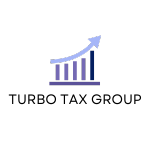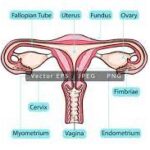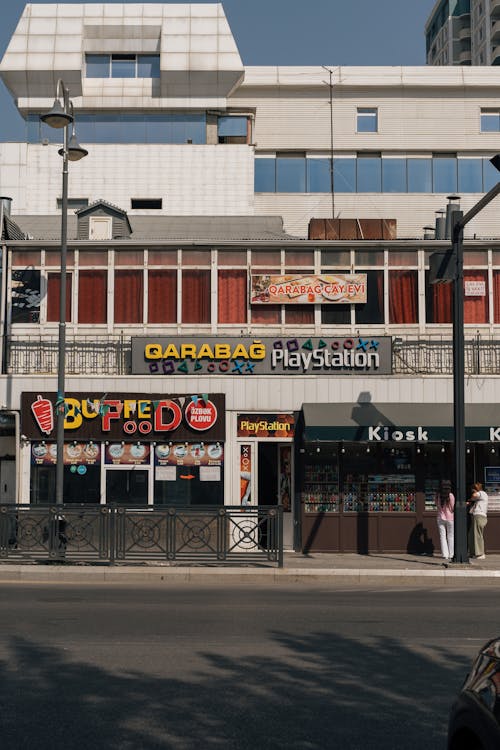Introduction: Is banners and flyers benefits for business
Banners and flyers are some of the best traditional methods for increasing the visibility for businesses even with how prominent digital marketing is in today’s marketing landscape. These materials enable effective targeting while building brand reputation and delivering marketing messages. Moreover, they are able to deliver a compelling message to potential customers in a cost effective way.
This essay will outline some ways through which businesses can benefit from the usage of banners and flyers while also discussing their effectiveness in the above marketing landscape. We will explain further these marketing materials effectiveness and their usefulness through relevant statistics, examples and strategies to utilize them effectively for maximum output.
An Overview of How Banners and Flyers Are Used in Marketing In This Day and Age
Being that Banners and flyers are still used today, what are the marketing materials and what specific space do they occupy in the marketing space?
Banners and flyers are printed materials designed to capture the attention of a target audience quickly and effectively. They are highly utilized within promotional campaigns, events, and advertising. Even with how popular digital marketing has grown, these physical mediums remain important due to the following:
- Materials infused with Physique: Due to the tangibility of the banners and flyers, they enable a long lasting impression unlike digital ads which come and go.
Adaptability: The marketing materials can be displayed for viewing indoors or outdoors and can be used to target specific communities or even high traffic zones.
- Affordability: These materials are budget-friendly, making it easier for small firms with minimal marketing budgets to afford them.
Key statistics on the effectiveness of print materials:
In fact, based on an email survey of the Direct Marketing Association (DMA), it was reported that 79% of respondents take action subsequent to being sent direct mail flyers, indicating a high degree of engagement on this medium.
According to eye-tracking studies, it takes roughly 60% longer to engage in advertising which is highly text laden compared to seeing banners, which are visually more appealing.
Why Combine Traditional and Digital Marketing?
Most importantly, offline marketing tools such as banners and flyers supplement online marketing efforts:
1.Enhanced Visibility and Brand Recognition
Banners are capable of increasing brand recognition especially if they are positioned in a strategic location. For example, a banner can be printed to be noticed from a distance, which in turn boosts a businesses brand:
High Visibility: The advertisement can be effectively used in high traffic zones such as retail centers, urban cities or even exhibition stands as they make use of large bright colors and bold texts in order to capture the audience’s attention instantly.
Brand Reinforcement: The customer’s mind is more likely to become familiarized with the branding when those elements are frequently shown such as the logo, taglines, and colors associated with the business.
Case Study: A local coffee shop placed a large banner reading, “50% Off Lattes Every Friday!” on a college campus. The strategic positioning of the banner alone increased foot traffic by 40% within just three months on Fridays.
2.Cost Effectiveness
Banners when compared to other forms of advertising are extremely cost effective, and give excellent value for money:
Durability: The make use of with standable materials such as mesh and vinyl, which makes them able to last several campaigns.
Affordable Production: Cost is also saved when it comes to printing, as the price ranges from $20-200 depending on the needed size and materials.
Low Maintenance: Even after being installed, the banner needs very little supervision.
3.Versatility in Design and Placement
Banners can be molded into any form or shape depending on the requirements. For instance:
Custom Sizes: The client is able to choose from large outdoor banners to tiny indoor ones without any restrictions.
Diverse Placement Options: The environment is also taken into consideration in regards to the placing of the wall mounted, freestanding or hanging banners.
Versatile advertisement: Create banners to advertise trade shows, new products, or community events.
4.Geo-Fences
Banners perform remarkably well when targeting audiences at the local level:
Smart banner distribution: Place ad banners in areas with high footfalls, where your target audience is bound to frequent.
Building community relations: Marketing businesses through their banners enabled sponsoring of local events, thus serving as an indication of the brand’s dedication to the locality.
Example Chart: Average Cost vs. Reach for Banners
| Advertising Medium | Average Cost ($) | Estimated Reach (People) | Cost per Impression ($) |
|---|---|---|---|
| Banners | 100–200 | 5,000+ | 0.02–0.04 |
| Digital Ads | 200–500 | 5,000+ | 0.04–0.10 |
| TV Ads | 5,000+ | 50,000+ | 0.10–0.20 |
The table illustrates how banners offer a low cost-per-impression compared to other advertising mediums, making them an excellent choice for businesses on a budget.
Significance of Flyers in Business Marketing
In the current era where everything is digital, flyers still hold immense value for various businesses. They are simple, affordable, and effective means of marketing a product or service. Additionally, they ‘fly’ off the business grounds, making it easier to connect with potential customers while advertising the brand.
1.Specific Communication
Flyers are aimed to deliver a specific goal with every distribution. The design and structure of the flyer is targeted towards depicting a message in a clear and straightforward manner:
Selective Message: A flyer has the capability to focus on a particular offer, event or a service so that it is clear and concentrated.
Customized Handouts: Give out flyers in malls, trade shows, or community centers to areas where your audience is present the most.
Locally Targeted Marketing: The flyer can be directed to a specific neighborhood along with selecting a certain demographic.
Example:
A flyer was distributed by a home cleaning agency stating 20% off on services to first time customers in the local apartment complex. Within a month of this marketing strategy, there was a 25% increase in inquiries and bookings.
2.Affordable Marketing Tool
Compared to other marketing tools, flyers have the lowest cost of production while providing good results:
Cost Effective Method: Printing designs for a thousand flyers usually ranges from $50 – 100, depending on the quality of the paper and work.
Scale Economies: Lower cost and high production.
Average and low-cost distribution methods: Flyers can be dropped off, sent out through the postal system or placed in public areas.
3.Physical And Audience Friendly
Flyers are printed paper ads designed to attract attention:
Engagement: Instead of scrolling past, potential customers read through flyers that they have their hands on.
Retention: People place flyers on desks, fridges, or over their bulletin boards, reminding them of the business.
Emotional Connection: With the right color and material, responses are likely to be positive.
4.Excellent For Time-Sensitive Promotions
Flyers suit last-minute promotions or time-sensitive campaigns:
Quick to produce: They can be designed, printed, and distributed rapidly within days.
Event promotions: They are perfect to circulate for short term deals, sales, or new items.
5.Aids In Digital Marketing
Flyers can lead traffic to online platforms:
QR codes: utilize QR codes that lead to the company’s website or social media pages.
Hashtags: Brand tailored hashtags help increase engagement.
Cross-Promotion: Contests, giveaways, or email subscriptions can be promoted on flyers.
Example Table: Flyer Effectiveness Across Industries
| Industry | Common Use of Flyers | Typical ROI |
|---|---|---|
| Restaurants | Promoting daily specials or events | High (30–50%) |
| Real Estate | Advertising open houses | Moderate (15–30%) |
| Retail Stores | Announcing seasonal sales | High (25–40%) |
| Fitness Centers | Recruiting new members | Moderate (20–35%) |
Design Tip: Use bold headlines, vibrant colors, and clear calls to action (CTAs) like “Call Now,” “Visit Us Today,” or “Scan Here for More Info.”
Optimizing the Effectiveness of Banners and Flyers
Designing banners and flyers is just the beginning. To take advantage of these fully, it is imperative to pay attention to their design, distribution and messaging. Use the guidance below in order to make the most of the available space and the banners and flyers that you create:
1.Tips on the Designing of Effective Banners and Flyers
Marketing materials by virtue of a good design has a capacity to attract. Consider these pointers to make certain that your flyers and banners are not ignored:
Headlines That Grab Attention: To get a response use attention grabbing and engaging headlines. For instance rather than “Sale on Selected Items”, it is more convincing to say, “50% OFF SALE THIS WEEKEND!”
Images Of High Quality: Images ought to be relevant to the message one is trying to communicate and be designed within the appropriate range. Stick to a central theme and get rid of any clutter.
Fonts That Are Easy To Read: Easy to read fonts which have an appropriate contrast with the background should be used. A prevalent rule to follow is to utilize sans serif fonts for modern appeal.
Effective Use of Colors: Colors should be in line with your brand and evoke the right feelings. For example red is known to indicate excitement and blue instills trust.
Call to Action (CTA): Proactive CTAs like “Visit Us Today,” “Call Now,” or “Order Online,” should be placed in a location where they can be easily seen.
2. Strategic Placement for Maximum Visibility
The positioning and the distribution of your promotional materials, such as flyers and banners, is quite important.
High–Traffic Areas: In the case of banners, placement in trade shows, main street intersections, and busy streets increases the odds of the materials being noticed.
Localized Distribution: Flyers should be distributed around schools, offices, and shopping malls since that’s where the target populations will most likely be.
Event–Based Promotion: Remember to set up the flyers and banners at sponsored events, community meetings, or conferences for better brand recall.
3. Integrate with Digital Channels
QR Codes: For better engagement, include QR codes that lead directly to the website, promotion landing pages, or even the online store.
Social Media Tags: Encourage more online interaction by including branded hashtages and social media handles.
Exclusive Offers: Offer unique discounts or codes that are accessible only to those who respond to the banner or flyer.
An example of a successful integration of the above methods is a Boutique gym that placed a flyer advertising free trial memberships for a week, which had a QR code for an online registration form. The strategy led to a 20% conversion rate.
4.Monitor and Measure Results
Evaluating the performance of your banners and flyers assists in future campaign improvements:
Promo Codes: Allocate codes for every campaign to calculate the redemption rate.
Surveys and Feedback: It is effective to ask customers how they found out about the business to assess the effectiveness of the flyers and banners.
Digital Analytics: Keep track of traffic and conversions initiated from the QR codes and/or URLs embedded on the support materials.
Example Table: Metrics to Measure Flyer and Banner Success
| Metric | How to Measure | Importance |
|---|---|---|
| Foot Traffic | Count increase in store visits | Evaluates reach |
| Conversion Rate | Track promo code usage | Measures effectiveness |
| Customer Feedback | Use surveys or feedback forms | Gauges impact |
| Online Engagement | Monitor QR code or URL activity | Links offline to online |
5.Case Studies: What Works Excellently with Banners and Flyers
Local Bakery: A small scale bakery used a yellow/green banner of their new line of artisan breads, which was placed outside the shop. It resulted in a 15% sales increase in the first month alone.
Event Organizer: At Universities, students were sold flyers to advertise a live concert, offering early-bird specials. Almost 50% of the total ticket sales stemmed from the flyers.
Conclusion and Key Takeaways
Once again, each company we examined makes use of banners and advertisements because they are inexpensive, efficient, and effective. During the age of social media marketing, these physical forms of advertising can leave lasting impressions and grant the desired relationships to be forged with the audience.
Key Takeaways
- Banners are most appropriate for branding, promotions, and events because they are very visible, long lasting, and inexpensive. Since they are not expensive to make, businesses can easily maintain a strong ROI by using them to target local audiences.
- Direct communication can be enhanced through flyers, which are easier to make, and charitably provide another opportunity to market… through digital means with QR codes, and promo codes.
- Maximizing Impact: Success with both banners and flyers depends on proper planning of the graphic design, optimal positioning, and mingling with online channels.
- Track and Adapt: One simple way to improve marketing and advertising is by examining campaign data such as promo codes, customer feedback, and survey responses from clients and measuring campaign effectiveness through these.
Final Thoughts
While digital marketing continues to dominate, banners and flyers may not be the most impactful, they still play the most crucial role in offline advertising. It is a must not to ignore them as they enable businesses to reach customers in real-life, enhance brand recognition and achieve tangible results in specified segments of the population.
To fully capture attention, build trust, and grow organically, integrating banners and flyers with the marketing strategy can be very beneficial for businesses.
So Do You Think You Should Get Banners and Flyers for Your Business?
There is a lot that can be achieved through flyers and banners, so if you are aiming to increase your audience, target a certain area, or help your ongoing online campaign, then this is one of the best ways to do it. Be sure to define your objectives from the start, design it well, and set a mechanism to gauge your effectiveness with these methods if you want to achieve optimal results.
Frequently Asked Questions (FAQ)
1. Why are banners and flyers effective for businesses?
Banners and flyers are effective because they offer a tangible way to communicate with customers. They are cost-effective, visually impactful, and perfect for targeting local audiences. Banners provide high visibility, while flyers allow for detailed and personalized messaging.
2. How can I design an eye-catching banner or flyer?
To design an effective banner or flyer:
- Use bold, engaging headlines.
- Include high-quality visuals.
- Keep the message clear and concise.
- Use colors and fonts that align with your brand.
- Incorporate a strong call-to-action (CTA).
3. What are the costs associated with banners and flyers?
The cost depends on factors like size, material, and quantity. Flyers are generally cheaper, with prices starting as low as $50 for 1,000 pieces. Banners vary based on their dimensions and materials, costing between $20 and $200 per piece.
4. Where should I distribute flyers for maximum impact?
Distribute flyers in areas where your target audience is most active, such as:
- Community centers and local events.
- Shopping malls and busy streets.
- Schools, colleges, or office complexes.
5. How can I measure the success of my banners and flyers?
Track success by:
- Using unique promo codes or QR codes on the materials.
- Monitoring foot traffic or inquiries after distribution.
- Asking customers how they found out about your business.
6. Can banners and flyers complement digital marketing strategies?
Yes, they can! Adding QR codes, social media handles, or website links to your banners and flyers bridges the gap between offline and online marketing. This integration boosts engagement and expands your reach.
7. Are banners and flyers suitable for all industries?
Most industries can benefit from banners and flyers, especially those targeting local customers. For instance:
- Restaurants use them for daily specials.
- Retail stores promote sales.
- Real estate agents advertise open houses.
8. What are the best practices for placing banners?
- Choose high-traffic locations like main roads, trade shows, or storefronts.
- Ensure the design is visible from a distance.
- Place banners at eye level or in locations with unobstructed views.





